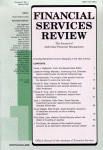Equity Fund Size and Growth
Implications for Performance and Selection
DOI:
https://doi.org/10.1016/S1057-0810(96)90023-2Abstract
Should individuals choose the largest or smallest equity jimisfor investment? This study explores the relationship of equityfind size to pe$ormance. Historical returns of largejiouis are found to be superior to their smaller peers. Yesterday’s best peforming funds tend to become to&y’s largestjkds as individuals invest heavily in response to the communications about the fund’s past success. But thefindings suggest that, once large, equity jimak do not outperform their peers. Especially for jima!s in aggressive growth objectives, the advantages of being small appear to outweigh the disadvantages. For individual investors wtih aggressive growth objectives, a strategy of investing in smallerjiouis may thus be wealth maximizing.
Downloads
Published
How to Cite
Issue
Section
License
Copyright (c) 1996 JAI Press Inc.

This work is licensed under a Creative Commons Attribution-NonCommercial 4.0 International License.
Author(s) retain copyright and grant the Journal right of first publication with the work simultaneously licensed under a Creative Commons Attribution-NonCommercial 4.0 International License that allows to share the work with an acknowledgment of the work's authorship and initial publication in this Journal.
This license allows the author to remix, tweak, and build upon the original work non-commercially. The new work(s) must be non-commercial and acknowledge the original work.


